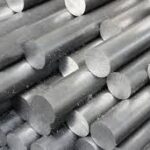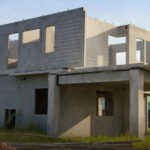Bricks Rate in Lahore – Detailed Guide for 2025 Construction Planning
The real estate and construction sectors in Lahore are experiencing steady growth in 2025, leading to increased interest in construction materials. Among these, bricks remain the most essential component for any building project. Whether you’re constructing a small home, a commercial plaza, or renovating an existing structure, understanding the Bricks Rate in Lahore is crucial for budgeting and long-term planning. These rates can significantly influence the total cost of construction and vary due to multiple market factors.
Importance of Bricks in Construction Projects
Bricks are the foundational units in Pakistan’s traditional construction. They are used in walls, boundary structures, partitioning, and structural reinforcements. Because of their durability, thermal insulation, and affordability compared to other alternatives, bricks have remained a preferred choice for decades. The quality and availability of bricks impact both construction timelines and structural integrity.
Market Dynamics Affecting Brick Rates
Several key market dynamics influence the fluctuation of brick rates in Lahore. Understanding these can help contractors, homeowners, and investors make informed purchasing decisions:
Seasonal Demand and Supply
Brick kilns usually operate seasonally, with production peaking during the dry months and slowing down during the rainy season. This cyclic availability affects supply, which in turn influences market prices. In the dry season, supply increases, stabilizing rates, while in the rainy months, reduced production may lead to higher demand and increased costs.
Fuel and Labor Costs
Brick manufacturing is heavily dependent on fuel sources like coal or biomass. A rise in fuel prices directly raises production costs. Similarly, labor charges contribute significantly to total expenses. Any fluctuation in these areas impacts the cost passed on to consumers.
Government Regulations
Government-imposed environmental policies and taxes can also affect brick rates. For example, initiatives to control kiln emissions or restrictions on traditional kiln operations may lead to reduced production or costlier alternatives like zigzag kilns, affecting the overall market.
Transportation and Logistics
Since brick transportation is usually done locally within or around Lahore, fuel prices and transport availability play an essential role in determining the final rate at the construction site. Longer delivery distances or fuel hikes often result in price increases.
Types of Bricks Commonly Used in Lahore
Understanding the types of bricks available in the market can provide clarity on what might be driving costs and what suits your construction needs:
First-Class Baked Bricks
These are high-quality, evenly shaped bricks baked uniformly in kilns. They are widely used for structural walls and exterior construction.
Second-Class Bricks
These bricks may have slight shape irregularities or uneven baking, but are still suitable for internal walls and non-load-bearing constructions.
Unbaked or Sundried Bricks
These are low-cost bricks dried in sunlight and are used in temporary structures or rural housing projects. They are less durable and usually not suitable for Lahore’s urban construction demands.
Fly Ash and Concrete Bricks
Modern alternatives like fly ash bricks and concrete blocks are gaining popularity in some urban developments. However, traditional clay bricks still dominate in Lahore.
Factors to Consider Before Purchasing Bricks
Quality Assurance
Visual inspection is not always enough. Always test a batch for strength, uniformity, and water absorption. Poor-quality bricks can weaken your structure and lead to long-term damage.
Supplier Reputation
Dealing with reputable suppliers or contractors ensures that the quality and quantity match your project’s requirements, even when market rates fluctuate.
Project Timeline
Ordering bricks in advance, especially before the peak construction season, can help avoid delays and secure stable rates.
Site Accessibility
Ensure your site can accommodate delivery trucks and storage for bulk brick supply. Transportation difficulty may lead to unexpected surcharges.
Environmental Impact and Trends
With increasing awareness of climate change and pollution, Lahore is gradually shifting towards eco-friendly construction solutions. Traditional brick kilns are among the top contributors to air pollution in Pakistan. Consequently, the government and NGOs are encouraging modern technologies like zigzag kilns, which produce less smoke and consume less fuel.
This trend is shaping the market by introducing slightly higher but more sustainable rates for environmentally friendly bricks. Builders aiming for green certification or energy-efficient homes in Lahore are now prioritizing such options.
Planning Your Construction Budget
Since bricks make up a large portion of the grey structure phase in construction, understanding current trends in Bricks Rate in Lahore allows homeowners to plan. It is advisable to compare rates from various vendors and understand the reasons behind price differences. Bulk purchases often result in better pricing, but only if there’s proper storage and cash flow planning.
Budgeting Tips:
Order in phases to avoid wastage.
Include transportation and unloading charges in estimates.
Plan according to project phases to reduce holding costs.
Alternatives to Traditional Bricks
In urban developments and high-rise construction, alternatives like concrete blocks or precast panels are gradually replacing traditional clay bricks. These options offer uniformity, insulation, and are often more eco-friendly. However, due to higher initial costs and a lack of availability in some areas of Lahore, they are not yet as commonly adopted for residential projects.
Final Thoughts
Whether you’re a contractor, builder, or someone planning to construct your dream home, staying updated with the Bricks Rate in Lahore helps in efficient budgeting and smarter purchasing. As the city continues to grow, so will its demand for quality construction materials. Keeping an eye on industry shifts, sustainability trends, and market pricing gives you a competitive edge and ensures a smooth construction process.



